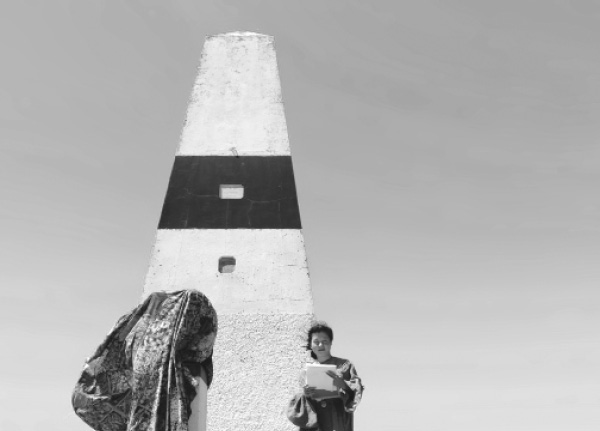
THE MAYBE MUSEUM
first performed on July 1, 2017
Atalaia Artes Performativas, Aljustrel, Portugal
performed once in 2017
TAIL BEND TRAVEL
(Sophie Mak-Schram / Ruben Green)
Leiden, Netherlands / London, UK
530467711t530467711a530467711i530467711l530467711b530467711e530467711n530467711d530467711t530467711r530467711a530467711v530467711e530467711l530467711@530467711g530467711m530467711a530467711i530467711l530467711.530467711c530467711o530467711m
tailbendtravel.com
THE MAYBE MUSEUM
TAIL BEND TRAVEL
During June and July 2017, we were artists-in-residence at Atalaia Artes Performativas, a performing arts festival in rural Portugal. There we developed the Maybe Museum’s first tour, focused on intangible heritage. Portugal has two traditions on UNESCO’s Intangible Cultural Heritage List, and one of these is the Cante Alentejano, which stems from the region Atalaia is in. We wanted to explore the limits of the museum format through playing with how the form of polyphonic singing could become both the form and content of a museum.
The Maybe Museum is a live, performed museum that responds to the archaic format of museum presentation. Rather than existing within the framework of four walls, owned objects, and chronological knowledge, the Maybe Museum combines fictional realities with factual possibilities and engages with how museums are imagined and experienced.
The performance, “Aljustrel: From Mine to Mind” was a 60-minute walk through Aljustrel. Based on the town’s odd mixture of mining wealth and declining choral tradition, the performance was presented as part of the Maybe Museum. Led by six characters over three chapters, we took an audience of 20 through an entangled narrative of local folklore, tourist sight lines, and regional histories. It featured an unveiling of a public statue that had hitherto not been covered up, a choreographed water drawing on a hillside car park, and the collective reconstruction of a regional myth inside a bullring.
For us, the challenge of developing a performance across multiple languages and layers of fiction (the Maybe Museum, its exhibition, and its characters) made two things visible. As a collaborative duo, we understood the kernel of our work differently, and this fundamental difference was where our work’s fluid meaning might best be produced. On one hand, our work was about obfuscating narratives into an experience that thwarted comprehension of a story, as well as responding to the linearity of institutional stories with something more ambiguous but nonetheless still comprehensible as composite parts. This tension generated the substance of “Aljustrel: From Mine to Mind”—manifesting in the character’s schizophrenic truths, contradicting approaches to addressing the audience, and how the Museum was at once a feasible format and an entirely absurd proposition. The question of what should be communicated, and how, flooded over from our engagement with the concept of museums into our disparate approaches to devising the performance, and into the performance itself.